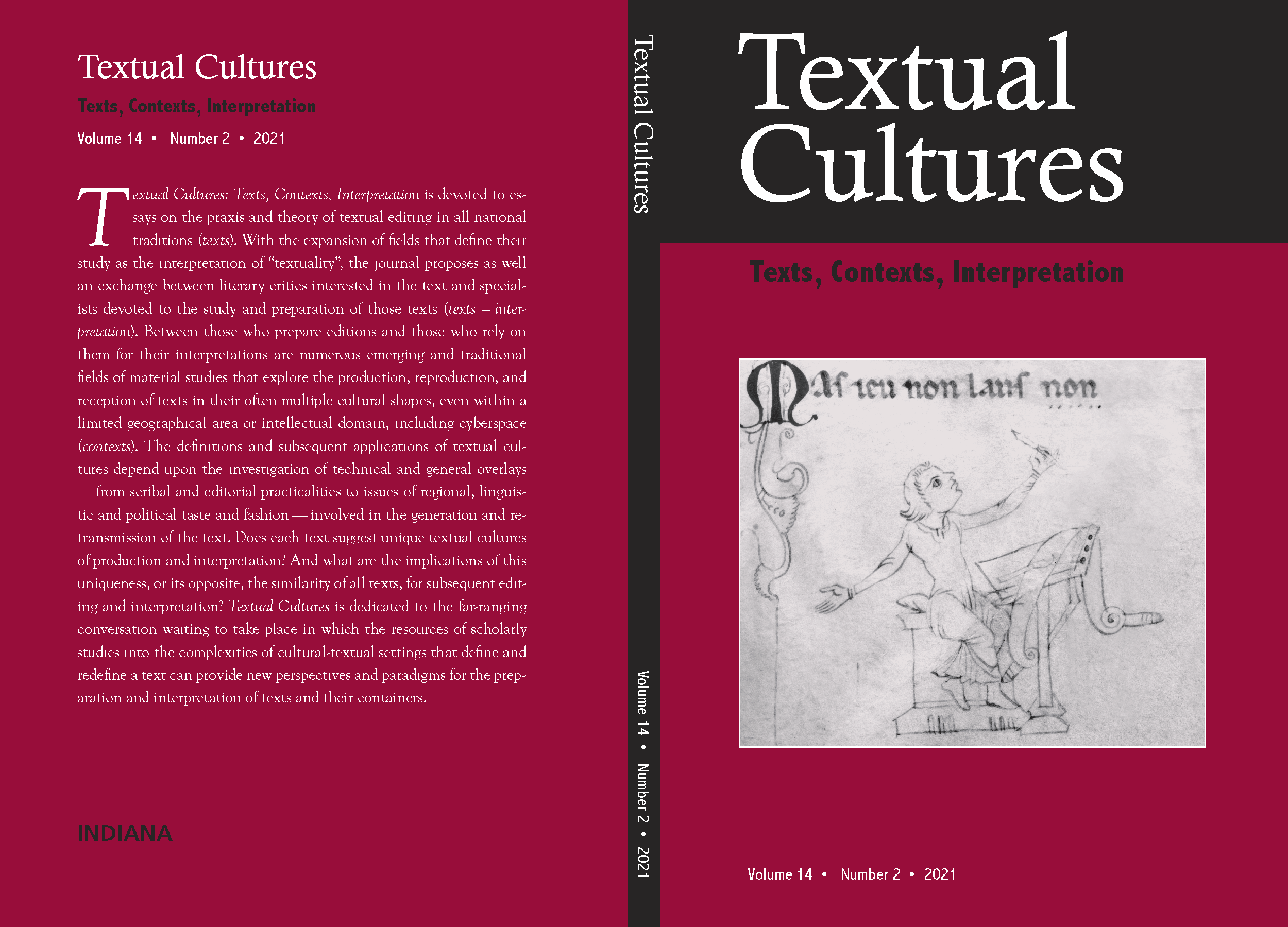Music’s Textual Dilemma Mistrusting Musical Texts
Main Article Content
Abstract
Music is sound: audible, unique, ephemeral. For music composed before the advent of electronic recording a century and a quarter ago, musical texts — the unique arrangements of musical symbols by which music is represented in visible form — are our principal evidence for how that music sounded when it was created. But the texts in which Western music of the past is preserved are not necessarily accurate representations of the music they record. Although the symbols that make up Western musical notation have remained relatively stable over the centuries, much that they represent has changed. Tunings and temperaments have varied — from repertoire to repertoire and from place to place. So have styles of singing and of playing instruments. So have the instruments themselves. Most important in the present context, the conventions for realizing texts have varied substantially; the idea that performers should follow their texts closely dates only from the mid eighteenth century. In these contradictions lies music’s textual dilemma: music historians and performers must depend upon texts, but even supplemented by research in performance practice, texts do not necessarily provide the information necessary to support informed discussion.
Downloads
Article Details
Authors who publish with this journal agree to the following terms:
- Authors retain copyright and grant the journal right of first publication with the work simultaneously licensed under a Creative Commons Attribution License (see:http://creativecommons.org/licenses/by/3.0/us/) that allows others to share the work with an acknowledgment of the work's authorship and initial publication in this journal.
- Authors warrant that their submission is their own original work, and that they have the right to grant the rights contained in this license. Authors also warrant that their submission does not, to the best of your knowledge, infringe upon anyone's copyright. If the submission contains material for which an author does not hold the copyright, authors warrant that they have obtained the unrestricted permission of the copyright owner to grant Indiana University the rights required by this license, and that such third-party owned material is clearly identified and acknowledged within the text or content of their submission.
- Authors are able to enter into separate, additional contractual arrangements for the non-exclusive distribution of the journal's published version of the work (e.g., post it to an institutional repository or publish it in a book), with an acknowledgment of its initial publication in this journal.
